
Curator’s statement
When you hear people talk about the “South of France,” you may picture the sparkling blue Mediterranean Sea of Nice or Cannes, the glitzy yachts and beach clubs of San Tropez or the glamor of Monaco. But if you’re looking for authentic southern French charm, don’t skip Provence. It’s easy to spend a week in this beautiful region and never run out of things to do. Spring or fall are pleasant times to visit this quintessential French area, yet if you have your heart set on seeing the iconic lavender fields, then you’ll definitely want to go to Provence in the summer.
The Fora Difference
Book with Shannon to access exclusive perks and experiences on your trip.
Killer perks
Free upgrades, spa credits and more—we got you
Personalized recs
Customized travel planning for your style
Insider knowledge
Expert advice from people who’ve actually been there
Where to stay
Unlock perks by contacting Shannon to book your trip.
Where to Base Yourself
While you certainly can break your week’s holiday into two different stays, I recommend setting up a “base camp” in the heart of Provence and enjoying that town as well as exploring from there. Choose a villa where you can spread out, or one of the Provence area’s lovely hotels. And consider choosing a place with a swimming pool so you can explore during the day, head back to your pied-a-terre for a quick dip and a chilled glass of rose before dinner.
Saint Remy de Provence makes an ideal base since it’s charming, has a lively weekly market, lots of great restaurants, and It’s very central. But there are lots of other towns and villages in Provence to consider as well. If you select Avignon or Arles as a base, you could conceivably explore other spots without a car as they both have train stations, but to reach many recommended spots in this itinerary, you will need to rent a car. (Quick tip: Download Google maps ahead of time just in case you lose signal on the car’s GPS or on your phone. It’s easy to get lost on some of the small back country roads and we might or might not have found ourselves on a dirt road on a farm before having to backtrack.)
Day 1: Arrival
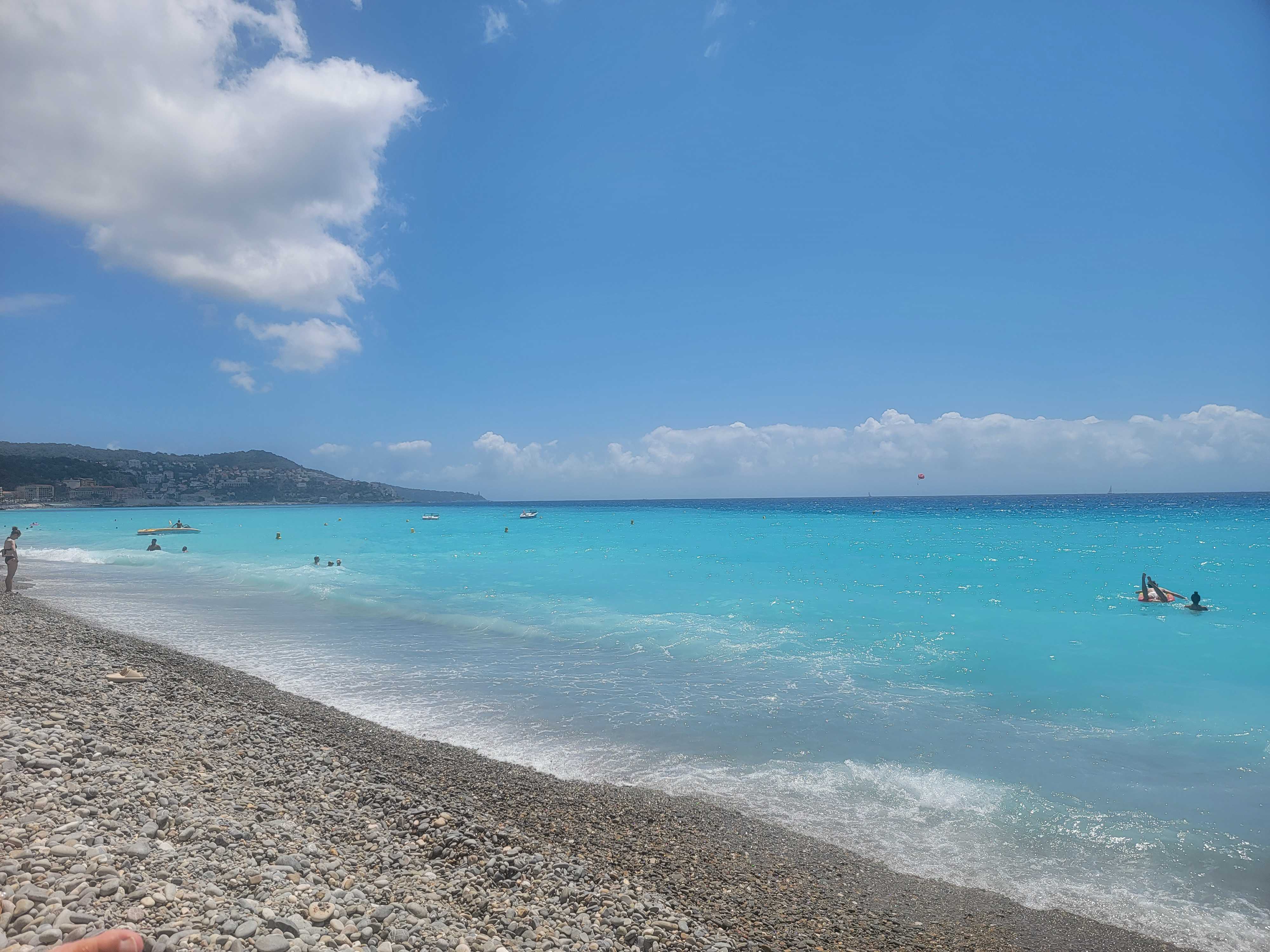
Fly into Nice or Marseille, and drive to your destination in Provence. If you’re arriving in the morning, spend a leisurely day heading to your hotel or villa, stopping for lunch along the way. You might consider visiting Chateau La Coste. Situated a bit outside of Aix en Provence, this is a great spot to stretch your legs. You’ll find multiple eateries, wine tasting, and art and architecture sprawled across its grounds.
If you’re arriving in the evening, consider staying the first night in Marseille or Nice and setting out the next morning.
Day 2: Exploring Saint Remy de Provence
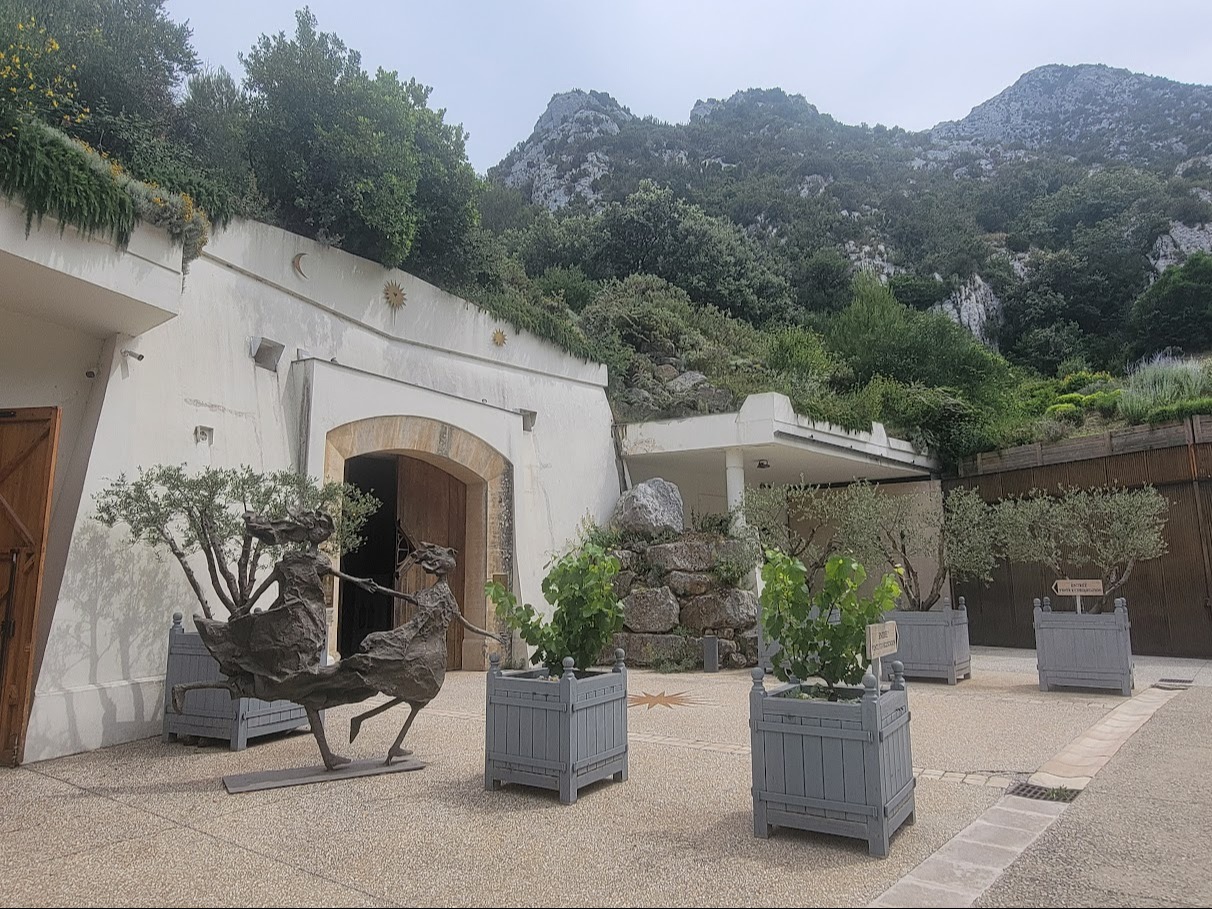
If there is one picture-perfect village in Provence you don’t want to miss, this would be it, in my opinion. If you’re arriving on market day, which is Wednesday, you’ll find booths winding through the cobblestone streets, offering fresh fruit and vegetables, cheeses, flowers, meats, soaps and big chunks of chewy nougat. There are also booths with artisan jewelry, cutting boards, bags and more.
As you’re wandering the picturesque pedestrian streets in the heart of Saint. Remy de Provence, stopping for coffee or wine or gelato, see if you can spot the fountain and the birth house of Nostradamus, the infamous advisor to Catherine de Medici. Just outside Saint Remy, you’ll find the Glanum Architectural site with ruins of a Roman settlement dating as far back as the sixth Century BC. Another spot that’s popular with sightseers, particularly Van Gogh fans, is St. Paul de Mausole, the asylum where the painter was treated after cutting off his ear, Glanum.
If you find yourself with time, head to nearby Chateau Romanin to taste some wine and olive oil. Picking up an extra bottle of wine or two at the beginning of your trip gives you plenty of time to enjoy it during your vacation. To get to Chateau Romanin, you’ll drive along shady roads lined with plane trees, then through vineyards and up a hill to the estate winery at the foot of ruins of a 13th century castle of the Templar order. If you’re fortunate, you may be able to watch gliders taking off and landing nearby as well.
Day 3: Avignon
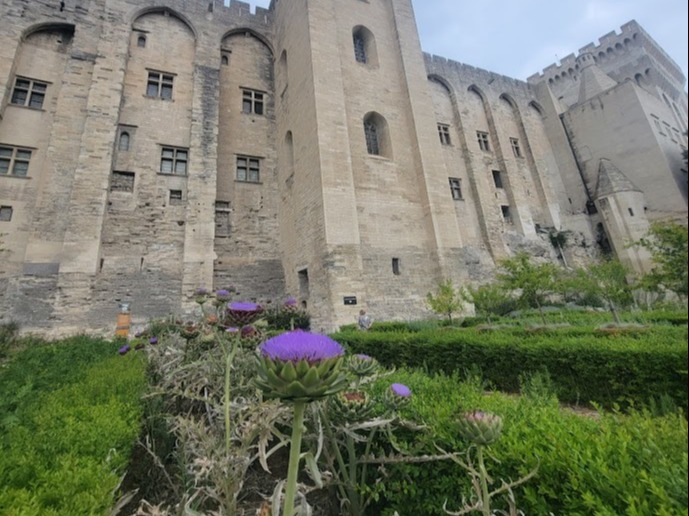
Avignon is the site of Le Pont Avignon, the bridge that’s the subject of the French song “Sur le Pont Avignon,” as well as the Palais des Papes, which served as the home for seven popes during the 14th century. They sit right next to each other, conveniently located to multiple underground parking structures. Definitely be sure to see both of these sites, though the Palais de Papes is much more impressive from the outside than inside since apparently many of its riches were carted back to Italy when the papal seat moved. Do make sure to buy your tickets for the Palais des Papes ahead of time.
A terrific spot for lunch is Le Carre du Palais, an elegant bistro near the Palais des Papes. They have indoor seating, but the best place to sit is the patio with a view of the palace and the square in front of it. with an exceptional patio for people watching and a view of the palace. The gazpacho with raspberries was one of the best things we ate during our entire trip to France. Do make a reservation ahead of time if you want to sit on the patio.
Other spots to visit include the Petit Palais Museum, where you can view art from the Middle Ages and Renaissance period as well as Les Halles d’Avignon, an impressive market where you can find loads of local produce, baked goods, meat, fish, cheeses, and more. But truly, the best thing to do in Avignon is simply to explore the medieval streets or walk the ramparts. There is also a little tourist train if you want to hop on that to see the city.
Day 4: Pont du Gard and Arles
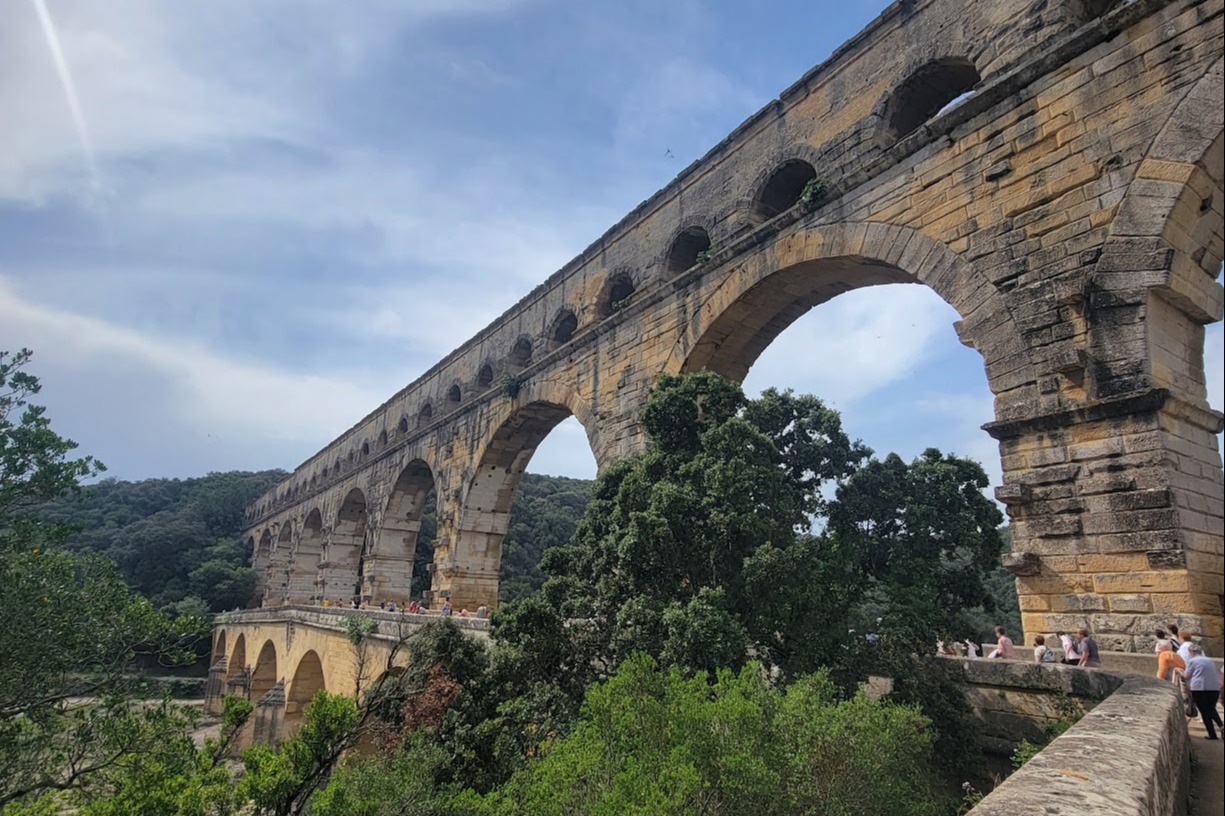
The Pont du Gard, which gets its name from the river Gardon which it crosses, is one of the tallest and best-preserved Roman aqueducts. It has three tiers of arches and is an impressive site. Allow time to walk across the bridge or along the trails around the site so you can see the river and bridge from various angles. There’s a restaurant on the Rive Droit or you can bring a picnic with you. You can also swim in the river if you want. There’s plentiful parking and it's an easy walk from the parking to the bridge itself.
About 45 minutes from Pont du Gard, you’ll find Arles, and if you’re lucky, you’ll pass fields of sunflowers along the way. Like St. Remy de Provence, Arles is well known for its association with Vincent Van Gogh. He spent time here, painted prolifically here, and it’s here that he chopped his ear off. You can take Van Gogh walks, either guided, or on your own. But there’s definitely more to Arles. Among the sites you won’t want to miss are the well-preserved Roman monuments. There’s an impressive amphitheatre and next door the theatre antique. During the summer, there are performances and festivals on offer so be sure to check the schedule if that appeals to you. There are also multiple cafes, bars, galleries and charming streets with picturesque buildings.
If you’re staying in Arles or if you find yourself with additional time in your itinerary, you may also want to check out the nearby Camargue, a large nature park with salt flats and marshes where you can find flamingos, wild horses and birds.
Day 5: Les Baux de Provence
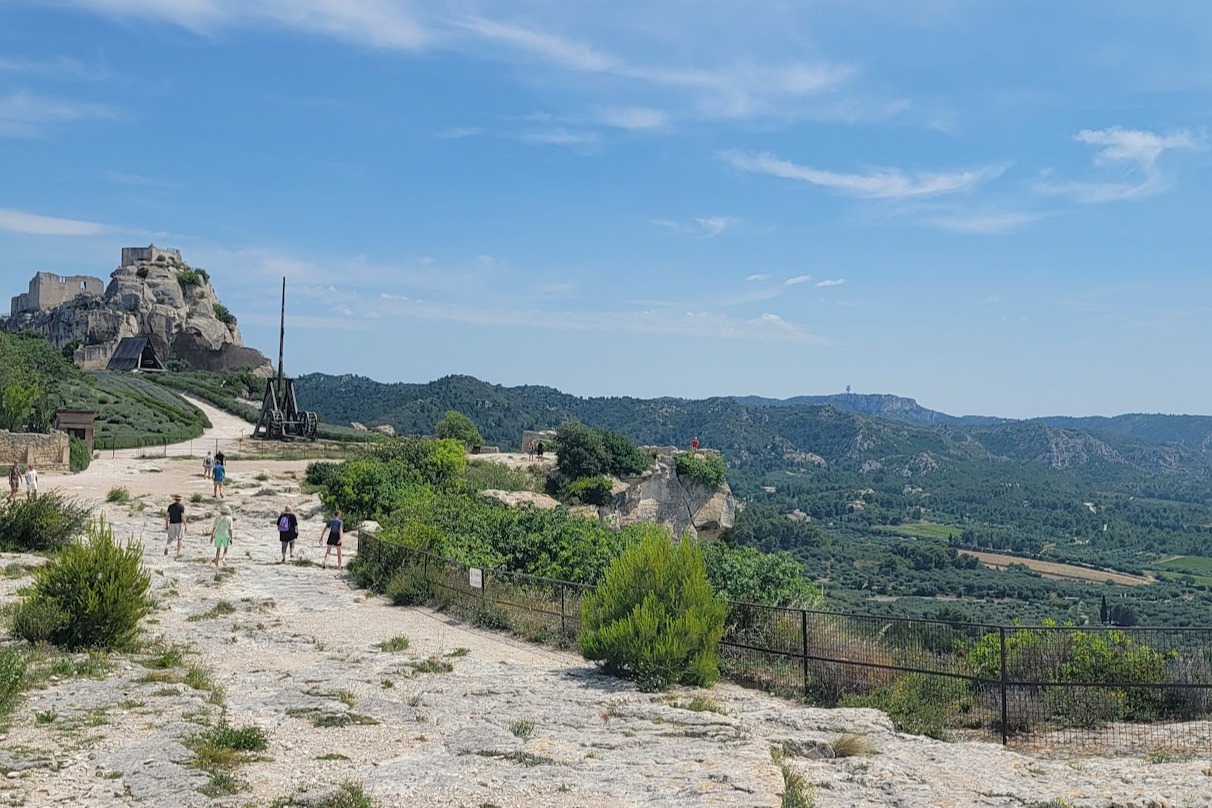
A short drive from St. Remy de Provence, you’ll find the hilltop village of Les Baux. Yes, it’s a bit touristy, with gift shops and cafes at every turn. But it’s still incredibly charming and well-worth a visit. Try to get there relatively early or you’ll find yourself parking way down the hill and walking up, and in the summer, it can get quite warm. Once at the town, you’ll wind your way up through the cobblestone streets to the top of the hill. About a third of the way up, you’ll find a small santon museum, where you can see multiple scenes with the small figurines. Nearly at the top, there’s a small chapel and then you can stroll around the expansive flat hilltop, stopping at the edge to look out at breathtaking views. You can alsp pay to climb up further and explore the chateau ruins.
At the foot of the town, visit Carrieres des Lumiere, an immersive multimedia art and music experience in an old stone quarry. Though similar experiences have popped up around the world, none are quite as impressive or dramatic as this one.
Day 6: Provencal Villages and lavender fields
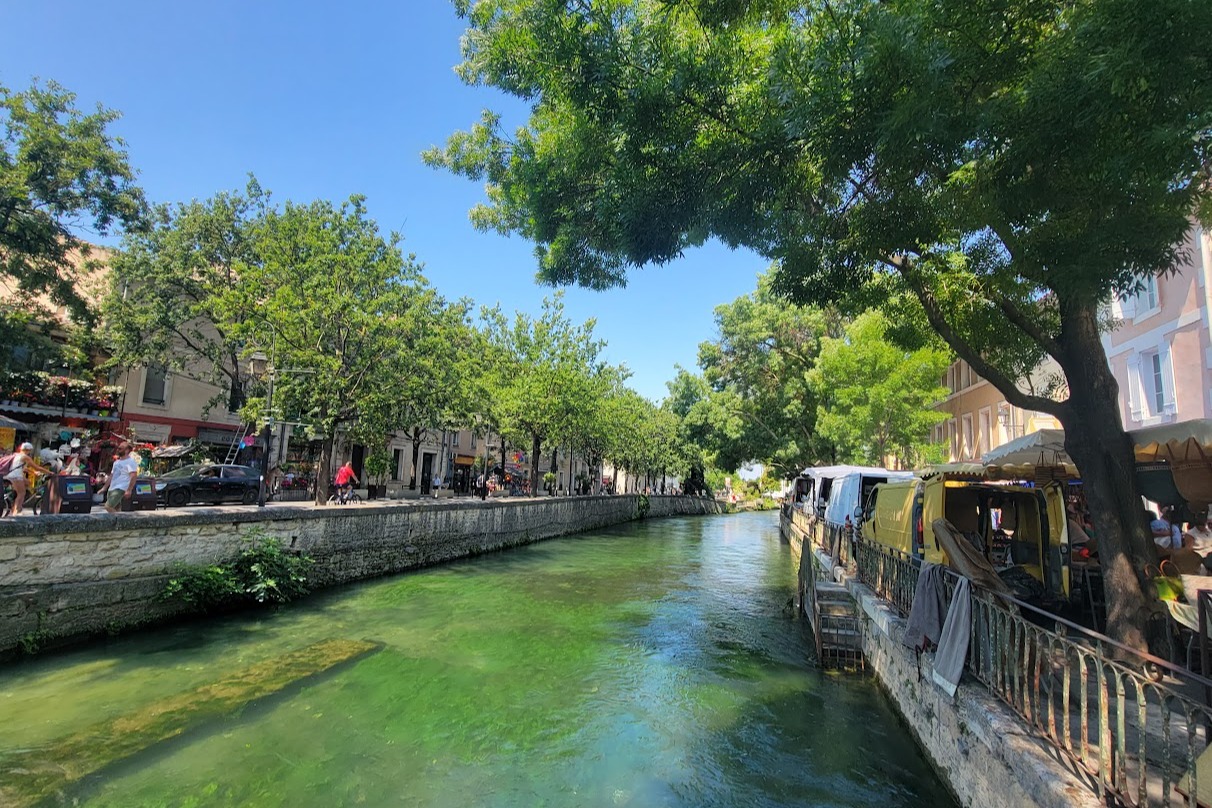
If you’re visiting in the summer when lavender is in bloom, then be sure to allow some time to stop and take pictures and drink in the heady floral fragrance. One of the most iconic spots is the Abbaye Notre-Dame de Senanque and chances are that if you’ve seen pictures of lavender fields with a beautiful stone building behind it, it was probably here. We visited in late June and the fields were barely beginning to show color, so timing is everything. We did find some lavender fields elsewhere as we drove from village to village so be sure to keep your eyes peeled. We passed some beautiful fields just outside Roussillon and Gordes, as well as farther north near Sault.
Which villages to visit? There are so many that if you love picturesque places, it’s like a chocoholic trying to choose the best candy from a full box of See’s chocolates. You won’t be able to see them all. Here, though were some of my favorites:
Gordes: This is another absolutely iconic spot in Provence. There’s a spot you can stop on the way in to get the quintessential Instagram shot of the hilltop village. Just google Gordes viewpoint and enter it into your GPS and you’ll be set. There’s even a pullout parking lot where you can stop. The town has several parking lots, and once you’re there, you can walk along cobbled lanes, looking out at beautiful viewpoints or stopping for chilled rose. We had one of our best lunches of the whole trip on a terrace in Gordes at le qg de Gordes. I highly recommend the burrata salad with a glass of rose.
Roussillon: Many of the hilltop villages resemble each other, but Roussillon is different because all of its buildings are painted red, yellow and orange, giving it a warm look. It sits in the heart of one of the largest ochre deposits in the world and the town is known for its dramatically colored cliffs and buildings. You can also walk the ochre trail, the site of a former ochre mine. Quick tip on this - don’t wear your white shoes to do this. And do take water with you because it can get quite warm in the summer and coming back up the hill can be thirsty work. We had another of our best lunches in Roussillon, looking out over the ochre cliffs.
Isle Sur La Sorgue: Known for its antique stores and bustling market days, this pretty town has a bubbling river running through it and loads of quaint waterfront cafes. We were there on market day and it was the most impressive of the markets we visited on our trip. If you do go on market day, be sure to get there early. And if you plan to be there for lunch on market day, be sure to book ahead. Lots of other people will have that same idea.
Other towns to consider:
Apt, Menerbes, Lacoste, Bonnieux, and Lourmarin. Aix-en Provence is also quite a popular destination.
Wine tasting stop: If you are near Domaine de la Citadelle, which is near Menerbes, I recommend stopping here to taste the wine, have a look at the garden and also walk through the corkscrew museum.
Day 7: Chateauneuf du Pape

If you’re a wine lover and staying in Provence, then head to Chateauneuf du Pape in the Rhone wine region for the day. From Saint Remy de Provence, it’s only about a 40-minute drive, and from Avignon, even less. Here you can see the ruins of the chateau where the popes summered while they were based in Avignon. You can stroll through more cobblestone streets, because really can you ever do that too much? And you can taste wine. A couple quick tips here: If you plan to be tasting much wine, hire a guide or driver so that you don’t have to designate one of your parties as the driver. And don’t rely on Google maps to navigate through the village. The streets are very, very narrow and your car may not make it where Google wants you to go. And yes, I say that from personal experience.
There are lots of wine shops and restaurants in Chateauneuf du Pape but one I highly recommend is Les Caves Saint Charles. You must make an appointment for a tasting in this cave that’s tucked beneath the ancient halls of the popes’ original cellars. It’s been there for hundreds of years, and you’ll enjoy a tasting with an education about Chateauneuf du Pape wines.
Just up the hill from Caves Saint Charles sits Le Verger des Papes, a restaurant with an outstanding view terrace that’s the quintessential place to sip a glass of rose while you gaze at the Rhone River. This is a popular lunch spot so be sure to make reservations ahead for lunch particularly if you’d like one of the spots with a view.
If there’s anywhere you plan to book a wine tour while you’re in France, this would be one of the regions to continue doing so. France has many notable wine regions, and this one is a standout.
Note that if you end up with some extra time on the day you go to Chateauneuf du Pape, you could possibly squeeze in one of those additional villages you didn’t have time to see earlier in the week. Or perhaps you want to spend one last late afternoon lounging by the pool, sipping rose and enjoying the summer sunshine.
Summary
There are so many more things that you could do and see in Provence than I’ve detailed in this guide. The Gorge du Verdon makes a great day trip, where you can kayak or hike. There’s the Parc National des Calanques situated along the coast with stunning fjord-like scenery.
There are trails in the Alpilles to explore on foot or by bike. If you’re a foodie looking for Michelin star restaurants, or an oenophile wanting to explore wineries, you won’t be disappointed in this region. There’s history, architecture and art simply waiting for you to discover and explore.
If you want help planning your trip to Provence, let me know where your passion lies, and we’ll create your perfect vacation together.
Need to know

Travel Advisor
Shannon Jones

Get in touch with Shannon
Did you like this guide? Reach out to customize and book your own experience. Or, just to chat about travel in general.
You can normally expect a response from Shannon within a business day or so. You’ll also be subscribed to our travel newsletter (you can unsubscribe at any time).
For more travel tips, check out Fora Advisor Wieteke Maris's guide, Paris & Provence for Art Lovers.
This guide is part of our ongoing series on travel to France.